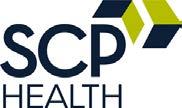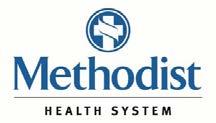THE EXECUTIVE CONNECTION OF NORTH TEXAS



EDITORS
Amanda Brummit, FACHE
Holly Hrabik
Sarah Sentmore
Kean Villarta
Bert Witherspoon, FACHE
CONTRIBUTING
Amanda Brummit, FACHE
Holly Hrabik
Melinda Schmidt, MBA, BSN
Sarah Sentmore
Bert Witherspoon, FACHE
ADVERTISING / SUBSCRIPTIONS
info@achentx.org
ACHE of North Texas
Editorial Office, c/o Executive Connection PO Box 224732, Dallas, TX 75222-4732
p: 972.413.8144
e: info@achentx.org
w: achentx.org
President - Ajith Pai, FACHE
President, Texas Health Harris Methodist Hospital
Southwest Fort Worth
President-Elect - Kris Sanders, FACHE
SVP/Northern Market Growth & Development
Children’s Health
Immediate Past President - ACHENTX Foundation Liaison
Aaron Bujnowski, FACHE
Managing Director, Health Industry Group | Health Systems Practice, Alvarez & Marsal Holdings, LLC
Treasurer - Sponsorship Committee Liaison
Tim Bowen, FACHE
President, Baylor Scott White - McKinney
Diversity, Equity & Inclusion Officer - Membership Liaison
Michael Talley, RRT, FACHE
VP of Clinical Operations & Virtual Care, CHRISTUS Health
Acting Secretary - Networking Committee Liaison
Jared Lange, FACHE
Vice President, Operational Transformation, Parkland Health
The ACHE of North Texas e-magazine, The Executive Connection, is published triannually and includes information on the latest regulatory and legislative developments, as well as the quality improvement and leadership trends that are shaping and influencing the healthcare industry. Readers get indepth reporting on the issues and challenges facing hospital and health system leaders today. We make it our job to tell you about the great things the organization and Chapter are doing every day to ensure the health of our community. If you have any news and updates that you want to share with other members, please e-mail your items to info@northtexas.ache.org. Microsoft Word or compatible format is preferable. If you have a graphic or picture that you'd like to include, please send it as a separate file. The following are the types of information that our members shared in past ACHE of North Texas magazines, Advocacy Issues, Legislative Issues, Educational Opportunities, Awards / Achievements, Promotions (Members On the Move), Committee Updates, journal submissions, conference submissions, and workshop participations, sharing

Dr. Jim Allard, DNP, RN, NEA-BC, FACHE
ACHE Regent-at-Large, District 4
Vice President & Chief Nursing Officer, Advocate Christ Medical Center
Crystal Brown
Women’s Healthcare Executives’ Network Chair
Vice President Operations/COO, Methodist Mansfield Medical Center
Noreen Butte, MD
Physician Advisory Committee Chair/Liaison
Senior Physician Executive/Pediatrician
Barton Gill - Student Council Liaison Chair, Dept of Health Administration & Health Policy, UNT Health Science Center
Brandon Goertz, PhD, FACHE
Advancement Committee Liaison
President, Texas Health HEB
Nick Kagal, FACHE - Education Committee Liaison
HX Client Success Manager, Press Ganey
Christina Mathis, MHA
Sponsorship Committee Liaison
Chief Executive Officer, Medical City Frisco
Angela Vincent Michael, FACHE
Membership Committee Liaison
Director, Performance Improvement & Project Deployment Office, Methodist Health System
Laura Parsons-Yanez
Networking Committee Liaison
Senior Manager, Quality & Patient Safety
Walmart Health
Cassandra Self, FACHE
DE&I Committee Liaison
Professional Services & Finance Officer, Texas Health Resources
Jared Shelton, FACHE
ACHE Texas – North Regent
President, Texas Health Harris Methodist Hospital Fort Worth
Cardell Velez, MBA, R.T.(R)(N)(CT)(CNMT)
Mentorship Committee Liaison
Associate Vice President, Health System, UT Southwestern
Timothy Wilson - ACHENTX Community, Culture & Inclusion Committee Liaison
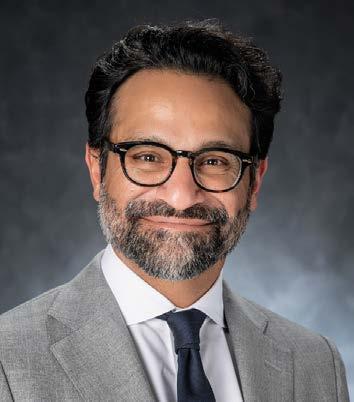
As I prepare to conclude my term as President of ACHE of North Texas, I find myself reflecting with deep gratitude on this incredible journey we’ve shared together. Serving in this role has been one of the greatest privileges of my career, and what has made it truly meaningful is you—the members who bring life, energy, and purpose to our chapter.
Over the past year, we have accomplished so much together. From hosting record-setting educational events to strengthening our mentorship program, from serving our community through volunteer initiatives to representing North Texas with pride at ACHE Congress, our chapter has shown again and again that leadership is best expressed in action. And those actions have an impact—not just on our professional growth, but on the patients, families, and communities we ultimately serve.
What has inspired me most is how consistently our members have stepped up—not for recognition, but because you believe in the mission of advancing healthcare leadership. Whether mentoring a student, sharing expertise on a panel, volunteering at a community event, or simply showing up to support a colleague, each act of engagement has strengthened the fabric of our chapter.
I also want to recognize the tremendous work of our board, committees, and volunteers who have given their time and talent generously to create opportunities for connection, education, and service. The strength of ACHE of North Texas has never come from one person or one role—it comes from the collective effort of leaders who care enough to invest in one another.
Although this is my final message as President, there is still time to be part of the exciting opportunities ahead this year. We have a number of upcoming events that I encourage you to take part in—whether to learn, connect, or simply be reminded of the incredible community of leaders you belong to. Your continued participation is what keeps our chapter thriving.
As I transition out of this role, I feel confident about the road ahead. Our chapter is thriving because of the passion and dedication of its members. I know the incoming President, Kris Sanders, FACHE, will continue to build on this momentum and lead with vision, integrity, and collaboration. I’m excited for her tenure and impact.
To our early careerists and students: you are not just the future of healthcare—you are already shaping it. Stay curious, stay engaged, and know that this chapter will continue to support you. To our senior executives: thank you for modeling what true leadership looks like and for opening doors for others to grow. Together, you create a chapter where leaders at all stages of their careers can thrive.
Finally, I want to leave you with this reflection: leadership is not a destination— it is a journey. Savor every step, every connection, and every lesson along the way. Because at the end of the day, titles come and go, but the impact you leave behind endures. And never forget—YOU are what makes the difference.
Thank you for the opportunity to serve as your President. It has been an honor I will carry with me always. I look forward to continuing to walk alongside you—as a colleague, a fellow member, and an advocate for the future of healthcare leadership in North Texas.
With gratitude, Ajith Pai, PharmD, FACHE President, ACHE of North Texas

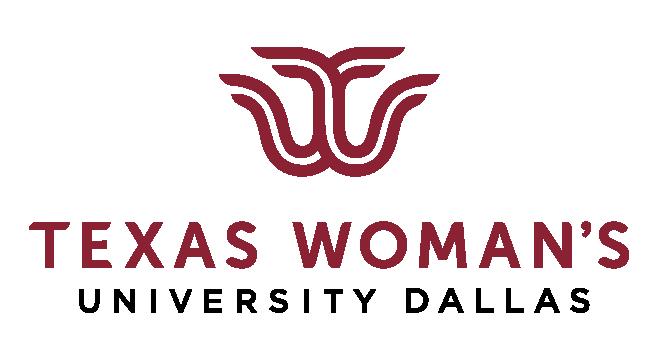


I have to admit that one of my favorite things to accomplish is a twofor-one. There’s something about the efficiency, the value-add, and the ability to check two boxes at once that really moves the needle for me. As my kids would say, “It’s very satisfying.”
Did you know that ACHE offers several opportunities every year to do just that? They’re called ACHE Clusters, and I would argue they allow you to check way more than just two boxes at once:
• Earn 12-24 ACHE In-Person Education credits in one trip!
• Network with healthcare professionals from across the country
• Customize your seminar lineup with the sessions that interest you the most
• Each cluster is located in a desirable destination. My pro tip is to spend the weekend prior to the Cluster exploring the city, and then the next 2-3 days immersed in the sessions.
Upcoming Clusters include some great destinations: Nashville (November 3-5), Orlando (December 15-17), and San Diego (February 9-10, 2026). I hope you’ll continue to pursue your commitment to lifelong learning at an upcoming ACHE Cluster!
And don’t forget that the 2026 ACHE Congress on Healthcare Leadership will be hosted March 2-4 in Houston, Texas. This year’s Congress was one of the best ever, and I hope you’ll be able to make it next year.
Jared Shelton, FACHE Regent, Texas-Northern
You can achieve anything you put your mind to. The power to crush any goal is in all of us. Let’s set it free.


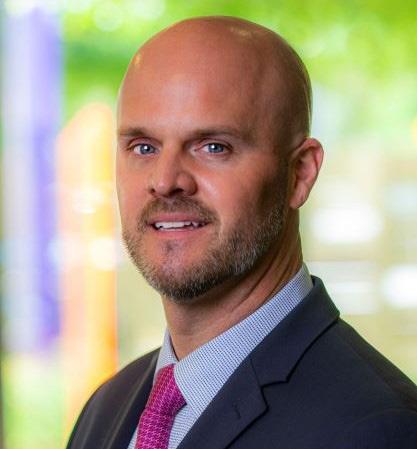
Jim Allard, DNP, RN, NEA-BC, FACHE
Dear ACHENTX Colleagues,
As the vibrant colors of fall begin to appear, I want to take a moment to reflect on the incredible work in progress across our region and express my gratitude for your continued dedication to advancing healthcare leadership.
This season brings with it a renewed sense of purpose and opportunity. Whether you are navigating strategic transformations, fostering innovation, or championing patient-centered care, your leadership is making a profound impact. The challenges we face are complex, but the strength of our community lies in our shared commitment to excellence, collaboration, and lifelong learning.
I encourage you to take full advantage of the rich programming and networking opportunities offered by ACHENTX this fall. From educational events to leadership forums, the ACHENTX gatherings inspire, connect leaders, and empower each of us. Let us continue to support one another, share insights, and elevate the standards of care across our organizations.
Thank you for your unwavering commitment to our profession and to the communities we serve. Please feel free to connect if I can be of aid to you or your teams.
Best,
Jim Allard, DNP, RN, NEA-BC, FACHE
District 4 Regent At Large American College of Healthcare Executives




Amanda Brummitt, FACHE Owner, Brummitt Group
Amanda is the founder of Brummitt Group, where she enjoys working in the areas she is strongest – strategy, development, operations, and marketing. She specializes in strategically planning growth and development for hospitals, ambulatory surgery centers, physicians, and infusion centers. She has 24 years of healthcare industry experience consulting, running the largest private practice anesthesia group in Dallas, and as an executive with HCA. She has a Bachelor of Business Administration and a Master of Health Administration. She actively volunteers with ACHE, NALHE, and Water is Basic.
Why did you join ACHE?
I joined ACHE back in 2003 to grow as a leader.
What have you gotten out of or do you get from your membership in ACHE? Relationships. While the knowledge gained from ACHE has been vast, the relationships are really the value for me. Knowing the people to call to find a good doctor, ask about a facility, brainstorm about issues in healthcare, and have professionals that push you is a priceless asset that ACHE has given me.
Your advice to others on how to get involved in ACHE?
Volunteer. A natural introvert that pretends to be an extrovert, building organic relationships through volunteering is the easiest way for me to give back while creating a vast network. And, with ACHE, you’ll be volunteering next to today and tomorrow’s healthcare leaders!
How would you encourage fellow members to maximize their ACHE memberships? Give to the community before you take. Get involved. Volunteer. Go to events. Support the chapter. And do that before you ask what the chapter can do for you!
Why did you go into healthcare? Why do you stay?
I accidentally ended up in healthcare… but couldn’t imagine myself in any other industry. Healthcare is hard and constantly challenges me. I truly believe that great health is one of many keys to a great life. By helping medical entities be more efficient and grow, it’s my little part to ensure we have incredible healthcare providers in our communities. Gotta be able to keep the doors open to care for people!
What is something people may not know about you?
I teach yoga at the YMCA… just for fun!! I love the cross section of humans I meet at the Y, plus it keeps my brain and body strong!
Find Amanda on LinkedIn

To submit your update, milestone, award or accomplishment, CLICK HERE.
ERIC STEPHENS joined Catalyst Health Group as Vice President of Data and Analytics on May 27.
CHRISTI NGUYEN, DNP, FACHE was recently promoted to Vice President of Nursing, Chief Nursing Officer at Ascension Providence.
MEREDITH JAIYESIMI received the AIGPE Lean Six Sigma Greenbelt Certification.
MEGAN GRAICHEN-PEARSON transitioned into a new role at Cook Children’s as a Clinical Process Improvement Specialist.
JULIE BALLUCK was promoted to system Chief Nurse Executive for Texas Health Resources.



A
career move you can have faith in.
At CHRISTUS Health, we unite under a shared mission: to extend the healing ministry of Jesus Christ.
Our organizational roots are strong, dating back more than 150 years. We continue to expand into new communities each year, adding more physicians and more services and bringing care closer to more people. Join a purpose-driven team where you can grow, inspire and lead.


By Holly Hrabik, MHA, MBA
On July 4, 2025, President Trump signed into law the sweeping One Big Beautiful Bill Act (OBBBA)—a comprehensive legislative package aimed at large-scale tax reform, border security, and substantial spending cuts in Medicaid.
For healthcare, the most consequential provisions include: nearly $1 trillion in Medicaid reductions over 10 years, a phase-in of stricter eligibility rules such as monthly work or community engagement verification, caps on state-directed Medicaid payments beginning in 2028, and a restructuring of federal relief funds with a temporary $50 billion allocation for rural hospitals. Outside of healthcare, the bill contains significant border security investments, extensions of certain tax breaks, and across-theboard federal spending limits, making it one of the most comprehensive fiscal packages in recent years.
Throughout the following editions of Executive Connections, ACHE of North Texas will be sharing a series of articles about how the One Big Beautiful Bill Act impacts our North Texas healthcare communities through insightful healthcare leader interviews and thought pieces.
The American Hospital Association (AHA) has voiced strong opposition, highlighting that the legislation includes nearly $1 trillion in Medicaid cuts over the next decade. The Congressional Budget Office estimates that 11.8 million Americans would lose health coverage as a result.
The AHA warns these cuts will drive up uncompensated care costs, potentially force service reductions or hospital closures, and impair access to emergency care—especially in rural and underserved communities.
AHA data underscores that 1.8 million individuals in rural areas could lose Medicaid coverage by 2034, along with a projected $50.4 billion reduction in federal spending supporting rural hospitals. Nearly half of rural hospitals already operate at a deficit, and 92 rural hospitals closed in the past decade—meaning these provisions pose an existential threat to rural healthcare delivery.
The Texas Hospital Association (THA) engaged in intensive advocacy during the reconciliation debates to protect the state’s Medicaid financing and safety-net infrastructure.
Grandfathering Local Provider Participation Funds: Preserves $7 billion in funding that allows Texas jurisdictions to sustain Medicaid financing.
Protecting State-Directed Payment Programs: Safeguards another $3 billion in state-directed Medicaid payments.
THA’s President and CEO, John Hawkins, emphasized that these measures ensure Texas’ “Lone Star safety net” remains intact despite national cuts.
Even with these protections, Texas hospitals still face $39 billion in net Medicaid funding losses over the next decade. The state could see 300,000 more uninsured Texans by 2034.
Tighter budgets for safety-net systems are already expanding to meet rising demand.
Rural hospitals strain despite a temporary $50 billion federal relief fund.
New Medicaid eligibility and payment restrictions beginning in 2028 require hospitals to prepare for additional verification and compliance measures.
Beyond hospital operations and financing, the public health consequences of the Big Beautiful Bill are far-reaching. With millions projected to lose Medicaid coverage, more Texans may delay or forgo preventive care, leading to higher rates of unmanaged chronic disease, reduced access to behavioral health services, and increased reliance on emergency departments as a last resort.
Rural and underserved communities, already struggling with limited provider access, face disproportionate risks of widening health
disparities. While short-term federal relief funds may soften the blow, the long-term reduction in coverage and resources could undermine population health gains and strain community health systems across Texas.
The One Big Beautiful Bill Act will reshape hospital financing, posing challenges to patient access and financial stability. While THA’s advocacy secured key carve-outs for Texas, the long-term Medicaid funding reductions remain a serious concern.
• Stay informed on Medicaid policy shifts and funding mechanisms.
• Engage in advocacy at both the state and federal levels.
• Collaborate across regions to share strategies, particularly for rural and safety-net providers.
American Hospital Association. AHA Statement on Senate Passage of the One Big Beautiful Bill Act. July 2025. aha.org
American Hospital Association. Rural Hospitals at Risk: Cuts to Medicaid Would Further Threaten Access. June 2025. aha.org
Texas Hospital Association. After the Federal Mega-Bill: Our Lone Star Safety Net Remains Intact. July 2025. tha.org
Texas Hospital Association. 2025 Session in Review: Outcomes for Texas Hospitals. June 2025. tha.org
Houston Chronicle. What the ‘Big, Beautiful Bill’ Means for Health Coverage, Hospitals and Medicaid in Texas. July 2025. houstonchronicle.com
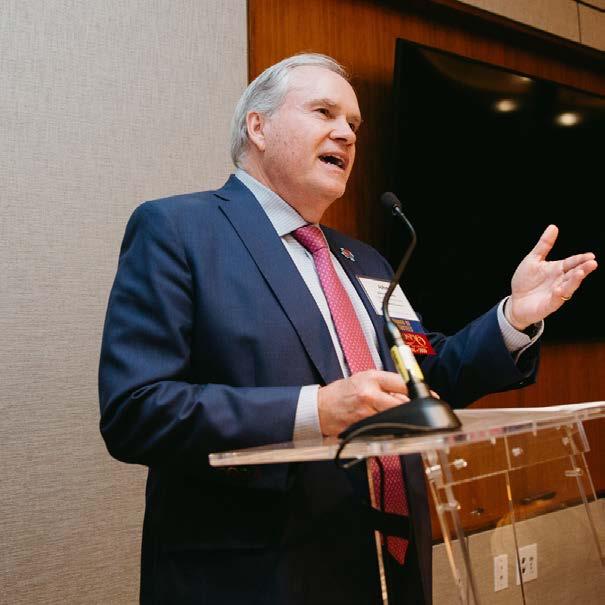
The One Big Beautiful Bill Act, signed into law this summer, makes changes to Texas Medicaid that may affect hospitals across Dallas-Fort Worth for years to come.
While the legislation preserved significant funding that was previously at risk, the policy shifts it enacts will require operational, financial, and strategic adjustments for health systems.
John Hawkins, President and CEO of the Texas Hospital Association, spoke about the bill’s realworld effects and what hospital executives should be thinking about now. His focus was clear: the ongoing Medicaid redetermination process, changes to retroactive eligibility rules, and the likely decline in supplemental Medicaid payments. Each carries implications for DFW’s healthcare delivery system.
One of the most significant provisions in the One Big Beautiful Bill Act changes how Medicaid eligibility redeterminations are conducted. During the COVID-19 public health emergency, states maintained continuous Medicaid coverage for enrollees, delaying regular eligibility checks. With
By Amanda Brummitt, FACHE
the new law, Texas must now follow updated federal rules that shorten timelines and add procedural requirements for verifying ongoing eligibility.
“This is a real-time issue for hospitals,” Hawkins said. “As eligibility checks resume, we’re seeing people (some of them still eligible) lose their coverage simply because of procedural issues.”
For hospitals, the operational implications are clear: more patients may present without coverage or lose it between visits. This creates additional uncompensated care pressure, particularly in systems with high Medicaid volumes. The bill’s changes also place greater administrative demands on hospitals, which must help patients navigate a more complex and timesensitive renewal process.
To adapt, hospitals may need to strengthen patient outreach, eligibility support, and real-time enrollment assistance to ensure patients remain covered whenever possible — and to protect financial stability.


At HDR, we’re helping our clients push open the doors to what’s possible, every day. hdrinc.com I 972-960-4000


The One Big Beautiful Bill Act also modifies Medicaid’s retroactive eligibility provisions. Historically, Medicaid could cover eligible patients for care received up to 90 days before their application was approved. That window has been critical for hospitals, particularly for emergency or inpatient care, where coverage wasn’t established at the time of service.
The new law narrows this coverage period, reducing the time hospitals have to identify Medicaid-eligible patients and assist them with applications. “Hospitals have to recognize that the safety net isn’t as wide as it was before,” Hawkins said. “If you don’t get that eligibility determination done quickly, you may not get paid for the care you’ve already provided.”
This change puts pressure on financial counseling teams to move quickly. In a large urban market like DFW, where patient volumes are high and cases are complex, delays in eligibility determinations can easily push past the new limits. That could leave hospitals absorbing costs for patients who would have qualified for Medicaid under the old rules.
Hospitals may need to invest in more eligibility staff, better technology for real-time coverage checks, and tighter integration between clinical and financial teams. The clock starts running the moment a patient presents for care, and missing the shortened window could mean the loss of thousands — or in some cases, millions — in reimbursement.
Texas hospitals also rely heavily on supplemental Medicaid payments, including state-directed payments (SDPs) and Disproportionate Share Hospital (DSH) funding, to offset the cost of serving low-income patients. These payments are
especially important in markets like Dallas-Fort Worth, where Medicaid base rates often do not cover the full cost of care.
The One Big Beautiful Bill Act protects existing SDPs that were submitted before the bill’s enactment, effectively “grandfathering” them. Hawkins noted this was important, but also cautioned against assuming stability. “We were able to preserve what we have in place right now, but we know those programs are going to be under review in the future,” Hawkins said.
The law does not delay the DSH cuts that are scheduled to take effect in October. Those reductions could remove hundreds of millions in funding from Texas hospitals over the next several years. Safety-net facilities in DFW, including major trauma centers and teaching hospitals, could face difficult decisions about services, staffing, and community programs if that revenue declines.
Hawkins stressed the importance of factoring these changes into long-term planning. Even hospitals that do not receive large DSH payments may be indirectly affected as patient demand shifts between facilities.
One of the lesser-discussed elements of the bill is the creation of the Rural Health Transformation Program, which allocates $50 billion over five years to states for rural healthcare initiatives. For DFW hospitals, the rural component matters because of patient flow. If rural hospitals are forced to reduce services like obstetrics, the care of those patients doesn’t go away.
“When rural capacity shrinks, those patients still need care, and they’re going to come to DFW,” Hawkins said.
While the funding could help stabilize rural hospitals, it is not guaranteed to prevent closures or service reductions. Any loss of rural capacity
increases transfer pressure on urban hospitals, particularly in emergency and specialty care. For DFW, that means preparing for surges in patient volume that may come from well outside the metro area.
Hawkins’ comments point to several priorities for hospital executives in the region:
• Strengthen eligibility and financial counseling to capture coverage before patients lose it.
• Invest in rapid determination processes to meet the shorter retroactive eligibility window.
• Model financial impacts of reduced supplemental payments ahead of implementation.
• Engage in regional planning to prepare for possible rural-to-urban patient flow increases.
• Maintain ongoing dialogue with elected officials, ensuring they understand how these policy changes affect patient care and hospital operations.
“We have to be prepared for whatever comes next,” Hawkins said. “The policy landscape is going to keep shifting, and we’ve got to keep adapting.”












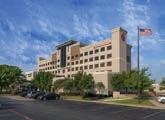
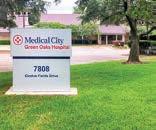





When sweeping healthcare legislation passes, the headlines often fade long before its effects reach the front lines. For hospitals, the real work begins in the quiet but relentless process of implementation—understanding new requirements, forecasting financial impacts, and ensuring patients don’t get lost in the transition.
W. Stephen Love, President and CEO of the Dallas-Fort Worth Hospital Council, has led through these cycles before. He recalls the Balanced Budget Act of 1997, when cuts to Medicare and Medicaid went so far that Congress eventually reversed portions of them. His takeaway from that period still holds true: “We’ve weathered the storm before. We’ve been through hard things and can do it again.”
Love recently spoke with Executive Connection about the “One Big Beautiful Bill Act” and its implications for Texas hospitals. While the legislation spans many provisions, three issues rise to the top for leaders to watch.
The end of the Public Health Emergency (PHE) marked a shift back to normal Medicaid eligibility procedures, requiring enrollees to confirm their
By Amanda Brummitt, FACHE
status periodically. During the PHE, continuous coverage provisions kept people enrolled without renewal paperwork. That safety net is now gone.
During the unwinding of the PHE, a large majority of people who lost Medicaid coverage in Texas did so for administrative reasons—missed renewal notices, outdated addresses, or not realizing they needed to re-enroll—not because they no longer qualified.
Looking ahead, estimates suggest that about 430,000 Texans could lose Medicaid coverage over the next decade due to a mix of eligibility changes and re-enrollment requirements. The human impact is clear—families losing access to care they need—but the operational impact for hospitals is equally significant.
“When people lose Medicaid, they don’t stop needing care,” Love says. “They show up uninsured, and that increases uncompensated care, which strains hospital margins.”
This burden will fall disproportionately on hospitals already operating with slim margins, especially rural facilities. And, as Love notes, the ripple effects reach everyone: “If a hospital
eliminates labor and delivery, it will affect you, even if you’re not on Medicaid.”
He also stressed that navigating these changes fairly depends in part on state leadership— specifically at the Texas Health and Human Services Commission. Love has worked with multiple administrations over the years and believes the current leadership is committed to a balanced approach. “I think Commissioner Young is extremely conscientious, and I think she works hard to be fair to the providers… to comply with federal requirements while balancing the needs of providers and the legislative branch.”
For hospitals with high Medicaid utilization, disproportionate share hospital (DSH) payments are a lifeline, helping offset the cost of care for low-income patients. Under the One Big Beautiful Bill Act, these payments will be reduced beginning in 2026, costing Texas hospitals about $778 million annually.
To put this in perspective, Dallas-Fort Worth hospitals provided more than $7 billion in uncompensated care last year alone. Any reduction in DSH funding adds significant financial pressure—pressure that can force difficult decisions about services, staffing, and facility investments.
The Act includes a $50 billion allocation over five years to help rural hospitals absorb these cuts. However, the distribution method is problematic for Texas. Half of the funds will be divided equally among all states, regardless of rural population size. That means states like Maine and Connecticut will receive the same share as Texas, despite Texas having far more rural hospitals.
Love points to a KFF Health News article that examined the policy’s uneven impact on Medicaid expansion holdout states, noting that this funding
structure will leave Texas with a sizable gap. “It will help,” he says, “but it’s not going to cover the gap.”
For rural hospitals—already operating on thin margins—this shortfall could threaten their survival. And closures don’t just impact Medicaid patients; they remove essential services from entire communities.
While not technically part of the One Big Beautiful Bill Act, the potential expiration of enhanced premium tax credits could have a larger immediate effect on coverage rates in Texas than any single provision of the legislation.
These credits help make insurance purchased on the federal marketplace more affordable. In Texas, 3.4 million people are covered through the marketplace, and many depend on these subsidies to keep premiums within reach. If Congress does not renew them by the end of 2025, analyses from Texas-based outlets and national think tanks project that up to 1.7–2.0 million Texans could lose coverage as soon as January 2026.
The fallout would be swift. “If someone is in the middle of cancer treatment, we can’t just cut off their benefits,” Love warns. Hospitals would face an influx of uninsured patients almost overnight, with financial consequences far exceeding those of the Medicaid changes—particularly in the short term.
Even if the credits are renewed, affordability remains a concern. In some states, shortened enrollment periods and reduced navigator funding are making sign-ups harder, and insurers have requested a proposed median 18% premium increase for 2026. That combination risks pricing out lower- and middle-income consumers. And when healthier, lower-risk individuals leave the marketplace, premiums rise further for those who remain—a cycle reminiscent of the Texas Risk Pool era.
Love’s message is direct: “Don’t let these extended tax credits expire. You’ve got to renew them.”
While these three issues form the core of the challenge, Love also highlights other provisions with indirect but meaningful impact on hospital operations and community health.
For example, reductions in the Supplemental Nutrition Assistance Program (SNAP) could worsen food insecurity. “What people eat is really medicine,” Love says. “When they lose access to adequate nutrition, it affects their health and drives up healthcare utilization.”
He also raises concerns about transportation, education, and employment stability—factors often referred to as social determinants (or social drivers) of health. Disruptions in these areas can lead to delayed care, unmanaged chronic conditions, and increased use of emergency services.
Behavioral health is another critical pressure point. About one-third of patients presenting to emergency rooms in North Texas have a behavioral health diagnosis. While it may not be their primary reason for seeking care, it complicates treatment and often requires additional resources.
Lessons from 1997—and a Path Forward
Love’s reference to the Balanced Budget Act of 1997 isn’t nostalgia. It’s strategy. That legislation initially imposed deep cuts, but sustained advocacy and collaboration eventually led Congress to restore some funding.
“What we all need to do is work together in a collaborative fashion with all the stakeholders— congressional leaders, state leaders, hospital leaders, healthcare providers—and sit at the table and say, ‘How do we work together to minimize the problems that will occur due to the One Big Beautiful Bill Act?’”
He believes this collaborative mindset is the best path forward. Complaints alone won’t change outcomes, but coordinated, nonpartisan advocacy can shape how provisions are implemented, influence related policy decisions, and secure necessary funding adjustments.
For hospital leaders, this means:
• Building coalitions across systems and sectors.
• Engaging with legislators early and often.
• Aligning advocacy messages to highlight community-wide impact—not just hospital finances.
• Maintaining a focus on patient-centered outcomes.
Love is clear-eyed about the challenges ahead but optimistic about Texas hospitals’ resilience. “As bad as it is, it could have been a whole lot worse,” he says. “We’ve been through hard things and come out stronger. This time will be no different— if we work together.”
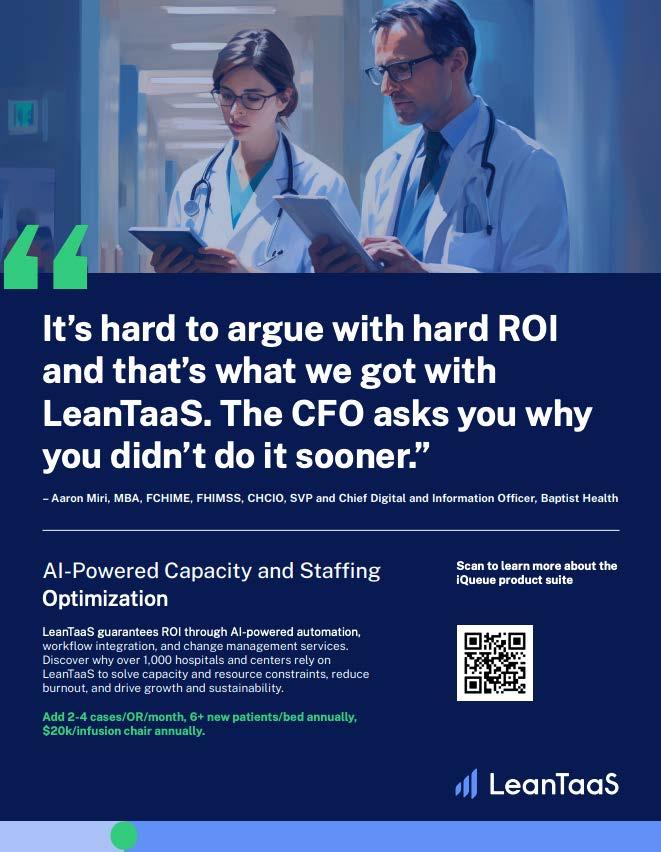
By Sarah Sentmore, MHA
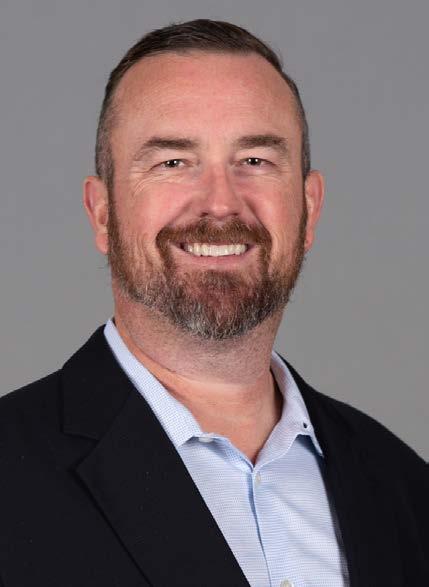
Dr. Brandon Lewis didn’t set out to be a healthcare executive. At one point, he imagined becoming a fighter pilot. But somewhere between aerospace engineering classes and late-night emergency room shifts in Texas, he found something even more compelling: the chance to help make healthcare work better for patients, physicians, and entire communities.
Today, as President of US Acute Care Solutions (USACS) South Division, Dr. Lewis oversees acute care operations across the southern U.S. But his approach hasn’t changed much from his days in clinical practice. He still leads with the same motivation that pulled him into medicine: make things better for people. That clarity of purpose, grounded in trust and service, is more than a personal philosophy. It’s a leadership framework for the kind of healthcare we need right now.
Dr. Lewis is one of those physician leaders who stepped into executive leadership but never lost the values that brought him to the bedside. Early in his career, mentors shaped his view of leadership by showing that when you take care of your people, they take better care of your patients. That perspective continues to guide how he shows up today—as someone who leads with empathy, clear expectations, and a sense of shared mission.
At USACS, that mission is reinforced by a structure where every physician is also an owner. “When you own something, you want to take care of it,” Lewis says. Ownership isn’t just about equity; it’s about accountability. It changes how people think, how they engage, and how they invest in long-term results.
“You treat a car you own differently than a rental. The same holds true in healthcare,” he explains. “When physicians feel a personal and professional investment in the outcomes, it shows up in every part of how they care for patients, how they lead teams, and how they contribute to the organization.”
That mindset creates natural alignment across teams and systems. It encourages physicians to think beyond the shift in front of them and engage in quality improvement, operational problemsolving, and stronger partnerships with hospital leaders. “We talk about having a servant’s heart but an owner’s mind,” Lewis says. “That’s how you create buy-in. That’s how you lead change.”
He also believes leadership is about empowering others and building a culture of trust. That starts with listening. “You can’t tell a physician or APP what to do just because you said so,” he says. “You have to explain the ‘why’. You have to earn their engagement.”
He sees his job not as having all the answers, but as creating space for solutions to emerge from the people closest to the work. “The best leaders I know didn’t just rise through the ranks. They brought people with them.”
Service isn’t just a part of Lewis’ work—it’s a philosophy plays out in how he approaches operational change. Instead of pushing out new processes from the top, Lewis and his team make sure improvements are co-designed with the people who will be doing the work. Because if something isn’t workable for frontline staff, it won’t last, no matter how good it looks in a presentation.
“One of the most common leadership missteps I see is mistaking complexity for improvement,” Lewis says. “We need to streamline systems that support, not stall, clinical excellence.”
Building operational trust means striking the right balance between safety, efficiency, and sustainability. It’s about understanding the pressures teams face and making it easier, not harder, for them to deliver great care.
“Sometimes we design things that make sense on a spreadsheet or in a meeting,” he says, “but they’re impossible to do at the bedside.”
When processes are created without input from those on the ground, they often create friction. More forms, more steps, and more documentation may seem like progress, but over time they can erode trust and burn out clinicians. Lewis is intentional about building systems that work in the real world and remove barriers to care.
Much of Lewis’s current work focuses on balancing mission and margin. Emergency departments are often the safety net for patients who lack access to primary care. Meanwhile, reimbursements from Medicare and Medicaid continue to decline, and commercial payers are following suit.
“It’s harder to do more with less,” Lewis says. “But that doesn’t mean it’s impossible.”
USACS addresses these pressures through an integrated acute care model that unifies emergency, hospital, and critical care medicine. This reduces unnecessary handoffs, improves continuity of care, and shortens length of stay. It’s a model that benefits both patients and the bottom line.
“It’s not just about throughput,” Lewis says. “It’s about creating a care pathway that actually makes sense for patients and the teams treating them.”
Telemedicine plays a role as well. From teletriage to post-discharge virtual check-ins, these solutions help reduce unnecessary admissions and strengthen follow-up. Each initiative is designed with the same principle in mind: better care starts with smarter systems that support both patients and clinicians.
Lewis takes a practical view of artificial intelligence (AI). He doesn’t see it as a fix-all, but he does see potential when it’s applied thoughtfully. In particular, he sees promise in ambient listening tools that generate documentation in real time, allowing physicians to focus more on patients and less on paperwork.
AI can also support safety efforts by identifying early signs of sepsis or other risks and flagging concerns in real time. Retrospective reviews powered by AI are helping teams spot gaps in chronic disease management and improve performance. But for Lewis, the most important thing is how the technology fits into the larger care model.
“The tech matters,” he says. “But the real innovation is still in the model. It’s how you use it to make a human connection and deliver better outcomes.”
That’s why communication remains front and center. In today’s world, patients often arrive with self-diagnoses from the internet or AI tools. Physicians need strong data to guide decisions, but they also need the communication skills to address concerns respectfully, correct misinformation, and build trust.
“Patients are more informed than ever, but that doesn’t always mean they’re more accurate,” Lewis says. “It’s up to us to meet them where they are, explain the reasoning behind our recommendations, and walk them through the plan.”
He sees these conversations as a clinical responsibility and a leadership priority. “The ability to explain the why behind a medical decision in a way that resonates with a concerned, often overwhelmed patient—that’s still the superpower of a great clinician,” he says. “And leadership has a responsibility to protect time and space for that to happen.”
For USACS, patient experience is a strategic priority. Lewis emphasizes that trust and satisfaction are connected. “If a patient doesn’t trust you, they’re less likely to follow the care plan. That affects everything from outcomes to readmissions.”
This mindset has produced results. In the company’s most recent Net Promoter Score survey of its health system partners, USACS scored a 78—well above the industry average in emergency medicine. For Lewis, that reflects a culture where clinicians are engaged, supported, and aligned with the mission.
“Engaged clinicians create better experiences,” he says. “And better experiences build better systems.”
Today’s healthcare leaders are navigating pressures that didn’t exist a decade ago. Financial constraints, rising patient complexity, and evolving technology are reshaping the field. Lewis believes the path forward is not just innovation, but alignment.
That means aligning people, purpose, and process. Aligning frontline teams with broader system goals. Aligning clinical quality with operational sustainability. For Lewis, the foundation of that alignment is leadership grounded in service and trust.


As the field continues to evolve, he believes leaders must stay focused on the human experience. “People will always be the point,” he says. “Technology can enhance that. Strategy can support it. But it’s the people— patients and providers—who are the heart of healthcare.”


How Sound Physicians Blends Data, Compassion, and Strategy — with Physician Engagement as the Glue and the Fuel
By Bert Witherspoon, FACHE
When Dr. David Gonzales, Regional President for the South Region at Sound Physicians (Sound), describes the driving force behind sustainable success in hospital medicine, he doesn’t begin with dashboards or spreadsheets. Instead, he emphasizes a truth that is as cultural as it is strategic: “Physician engagement is both the glue and the fuel.”
That framing, he explains, is more than a metaphor. It’s a guiding principle for Sound’s work across hospitals and health systems. Engagement binds teams together around shared values and a common goal, while fueling the innovation, accountability, and collaboration that drive measurable outcomes in caring for patients.
Healthcare executives know that data is nonnegotiable. Metrics drive contracts, shape reimbursement, and reveal where patient care is excelling or falling short. But Gonzales is quick to point out that numbers alone don’t deliver change.
“Data is critical,” he says, “but data doesn’t move people. Engagement does. We’ve learned that if you want clinicians to lean into the hard work of transformation, you have to connect the data to purpose, values, and compassion.”
That connection is where Sound has built its reputation. The medical group doesn’t just deliver dashboards; it provides the context and leadership to make analytics meaningful. Gonzales points to programs that align evidence-based practices with patient stories, giving clinicians a reason to own the metrics and push for improvement. For example, Sound’s standardized approach to clinician communication consistently provides patients with clear and respectful explanations of what are often complex medical conditions. A patient who we treated recently wrote to say, “I felt that my doctors were clear with their plan of care. I was really, really satisfied.”
Still, engagement without strategy can drift. Gonzales underscores that Sound thrives at the intersection of clinical compassion, operational strategy, and data-driven accountability.
“We don’t just show up to provide hospitalist services,” he notes. “We build partnerships. That means working with administrators on shared goals, embedding clinicians as not just caregivers but as decision-makers within the larger hospital ecosystem—which gives them more skin in the game—and aligning performance with both financial health and patient outcomes.”
These partnerships extend from providing
exceptional care at the bedside to demonstrating decades of business savvy in administrative forums, with Sound tailoring its approach to meet the unique challenges of each hospital. Whether it’s length of stay, readmission rates, or clinician retention, the medical group blends structured analytics with cultural intelligence for meaningful results.
Despite the strategic rigor, Gonzales insists that Sound’s true differentiator is compassion. In his words, “Hospitals aren’t just systems; they’re communities. Engagement matters because clinicians who feel supported are better equipped to connect emotionally with patients, support their colleagues, and provide the kind of care that builds trust with both their teammates and their patients.”
That belief shows up in how Sound invests in leadership development, mentorship, and clinician well-being. The goal isn’t only getting to better outcomes—it’s sustaining that kind of intentional care over time. By treating engagement as both glue and fuel, the organization ensures that its clinical leaders aren’t just hitting metrics—but preserving the human side of medicine.
For hospital executives looking to strengthen performance, Gonzales offers a simple but powerful takeaway: success requires more than numbers. Data provides direction, but engagement provides momentum.
“Our future is about transforming outcomes and partnerships,” he reflects. “The organizations that will thrive are those that can harness both the analytical and the human—the science and the spirit. At Sound, that’s the work we’re committed to every day.”
JUNE 17, 2025
At the ACHENTX Breakfast with the COO event, Herron Mitchell, FACHE, SSGB, delivered an unforgettable message rooted in humility, equity, and purpose-driven leadership. From his early days as a janitor to becoming the Chief Operating Officer of Foremost Family Health Centers, Mitchell shared insights shaped by diverse experiences in manufacturing, education, and healthcare.
His quote—“Speed is an illusion of efficiency”— underscored a key theme: true progress comes from culture, process, and people. Mitchell emphasized that hierarchy has no place in healthcare improvement, urging leaders to empower every team member to speak up and contribute their ideas.
He inspired attendees with his call to “run toward the fire,” reminding us that solving health disparities, especially in underserved communities like South Dallas, requires bold action and relentless purpose. His leadership style embodies the essence of servant leadership and echoes the powerful tenets of Simon Sinek’s “Start With Why.”
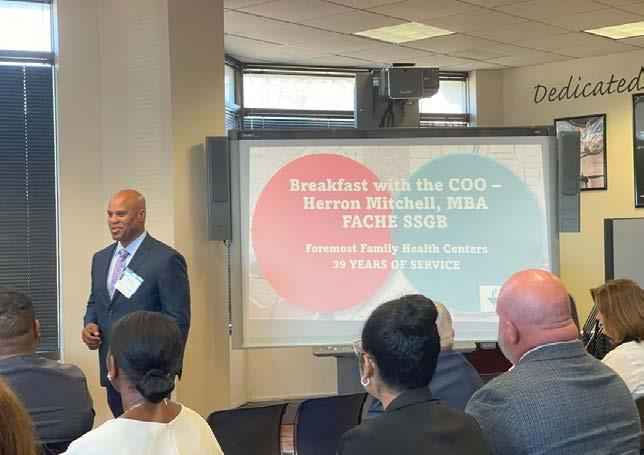


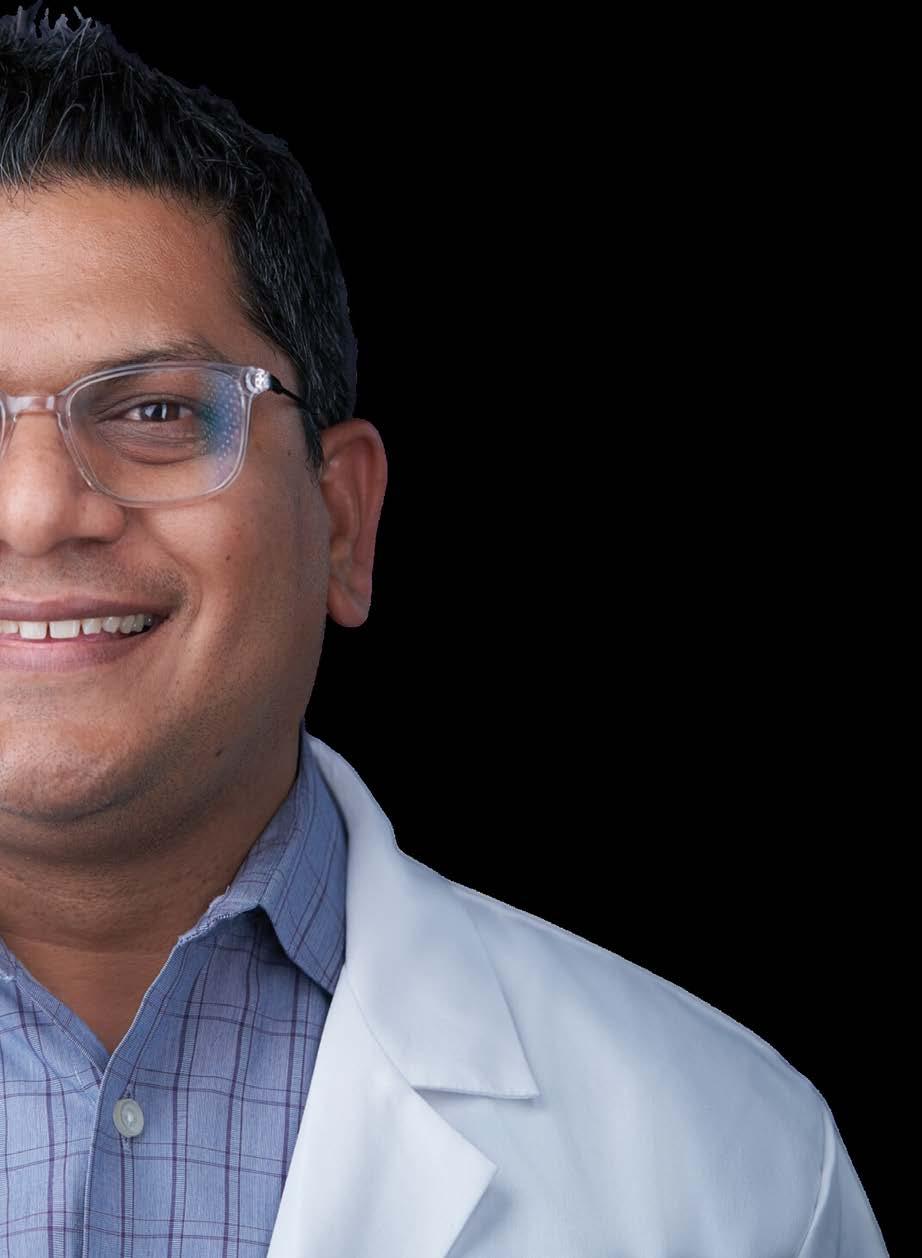
You want a partner who really understands the local needs of your hospital, and who puts patients and community first. A partner who listens to your unique challenges and comes to the table with solutions. That’s Sound. Our physician-founded and physician-led medical group is all about doing and being better — for our partners, our clinicians, and our patients.
A better partnership in hospital medicine, and in all our specialties.
Mihir Patel, MD, MBA, CPE CEO, Hospital Medicine
AUGUST 14, 2025
Bert Witherspoon, FACHE
On August 14, ACHE of North Texas hosted a special Breakfast with the CEO at Medical City Dallas, featuring Christina Mathis, CEO of Medical City Las Colinas.
Mathis shared a candid reflection on her journey from Columbia, Tennessee, to leading within HCA Healthcare. Growing up in a family business and on her grandparents’ farm taught her grit, adaptability, and humility—values that continue to shape her leadership.
Early experiences at St. David’s Medical Center launched her into healthcare administration, where she quickly learned that leadership means stepping up in moments of chaos, from CMS surveys to the COVID-19 pandemic.
“Leadership is not a license to do less—it’s a responsibility to be more,” she emphasized.
Her leadership philosophy centers on authenticity, presence, and joy. At Las Colinas, she prioritizes physician engagement, service line differentiation, operational excellence, and community partnerships, with the bold aspiration of being “the happiest hospital in the world.”
Zooming out, Mathis highlighted HCA’s ability to leverage scale, data, and AI to improve outcomes, noting that AI tools are already giving physicians more time with patients.
She closed with advice: invest in yourself, evolve as life changes, leverage networks, and always be present.


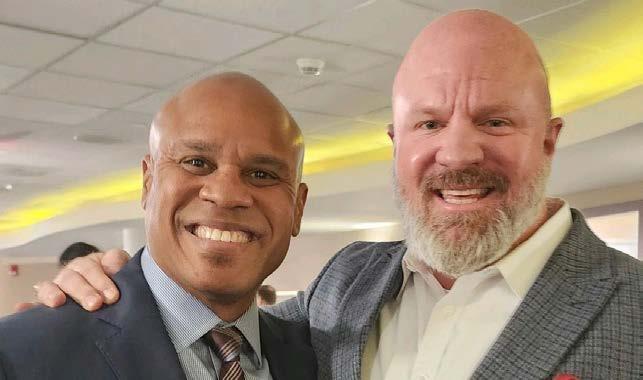
US Acute Care Solutions (USACS) is the nation’s leading physician-owned provider of hospital-based emergency and inpatient medicine. Our national reach and scale allow us to focus on being the best acute care practice in the country.
Patient-centered care is at the forefront of everything we do. Our mission is simple: to care for patients. It’s where USACS began, and it’s where we begin each day. By living our core values, Servant’s Heart and Owner’s Mind, we’ve helped dozens of hospitals and health systems improve their quality and service.

6,000+
2,400,000 VISITS at 68 hospitals
USACS staffs 68 hospitals in Texas, where we serve more than 2,400,000 patients each year through our emergency, hospital, critical care, and observation medicine services. We partner with several renowned health systems, including Ascension Seton, Baylor Scott & White, CommonSpirit, Emerus, Houston Methodist, Tenet, and Texas Health, to provide exceptional, high-quality, patient-centered care to communities across Texas every single day. We host an emergency medicine residency program and several fellowships at Dell Seton Medical Center at The University of Texas and staff two pediatric emergency departments, providing an array of clinical settings for our clinicians.






AUGUST 28, 2025 - THIRD QUARTER VIRTUAL EDUCATION PANEL ONE
Moderator
Nick Kagal, FACHE, HX Client Success Manager, Press Ganey
Panelists
Debbie Hillard, PsyD, Director, Texas Health Employee Assistance Program
Jasmine Mitchell, PhD, RN, Director of Patient Experience, Medical City Arlington
Kimberly Williams, MSN, Clinical Excellence Program Manager, Texas Health Resources
Burnout among healthcare professionals has only intensified since the pandemic, affecting staff, families, patients, and entire organizations. This panel explored how to move beyond quick fixes and build lasting strategies for resilience and well-being.
Leaders shared how employee assistance programs can become more proactive through wellness rounding, check-ins, and virtual selfcare sessions. Initiatives like Code Compassion provide peer-led support after tough situations, while Critical Incident Stress Management offers a structured way to process trauma before it causes long-term harm.
Prevention was a recurring theme—equipping staff with tools like resiliency training, gratitude practices, and boundary setting to stay
grounded before reaching burnout. Leadership also plays a crucial role by modeling healthy boundaries, showing vulnerability, and creating space for open conversations.
The key takeaway: lasting well-being requires more than programs. It demands leaders who embed wellness into culture and ensure caregivers feel safe, supported, and valued.
“Talk the talk and walk the walk… leaders have to model what they want for their teams. Boundaries, vulnerability, and self-care all start at the top.”
– Dr. Debbie Hillard
“Being resilient isn’t just about being strong. It’s about knowing when you’ve had enough, setting boundaries, and having tools to cope before it shows up in your health.”
– Kimberly
Williams

AUGUST 28, 2025 - THIRD QUARTER VIRTUAL EDUCATION PANEL TWO
Melinda Schmidt, MBA, BSN
Moderator
Rhett Stover, FACHE, President, Proactive MD
Panelists:
Patrick Aguilar, MD, Managing Director of Health, Washington University
Patrick Hammond, Chief Executive Officer, Emory Health Network
David Thompson SVP, Chief Growth Officer Mercy
On August 28, over 60 healthcare leaders gathered to explore strategies for building and sustaining clinically integrated networks (CINs) in the era of value-based care.
Moderator Rhett Stover highlighted growing pressures on hospital leadership to deliver higher-quality care at lower cost. Dr. Patrick Aguilar emphasized shared protocols, accountability, and governance that balance stakeholder interests, fostering trust and enabling smoother patient transitions. Patrick Hammond underscored collaboration between employed and independent providers, the importance of data sharing, and challenges of interoperability across EHRs. He noted the need for clean, standardized data to meet payer requirements. David Thompson highlighted the risks of unclear contracts, the importance of key performance indicators for growth, quality,
and cost of care, and lessons from Medicare Advantage and Medicare shared savings program models.
Panelists agreed CINs must align priorities, invest resources, and leverage technology to strengthen patient experience, improve outcomes, and ensure long-term sustainability in value-based care delivery.










MAY
Donald J. Keeler
Annalisa Abell
Shunail Gill
SPC Gregory D. Franklin
SPC Sheridan Freeman
Racheal Hill, PhD, MBA
Courtney Buckaloo
Sarah Luther
Kimberly A. Medley
SGT Gernard Clark, II
Kaylee Jones
LTJG Thorndrea Lewis
Chaitanya Katterapalli
Mackenzie H. Skaggs
Chebon Bravo
Marlow Herron, MHA
Lalita Kapuscinski
Rachel Lott
Jason D. Isham
Adway Raje
Rohit Sinha
Jake Tanel
Nathaly Twine, MBA
Jennifer Duffie, MHA, LPN
Robin Fry
A’Yana R. Hutchins
Denise M. Treadwell, CRNP, FACHE
Jeevan Goldwire, BSN
Wesley J. Tidwell, FACHE
Karin Buitendag
Ryan Heiden
Etta Lewis, BSN
Eric A. Northey Jr, MBA
Catherine S. Pugliese
Margie G. Stickles
Katherine Travis
Burke Wilson, DPT, MBA, FACHE
Jesse Millsap
Ashley Larsen
Vicki Dale
Tatum Bouffard
Myra R. Simon, MHA
Madeleine Clear
Nilesh B. Dave, MD, MBA, MPH
Diondra J. Dunham
Camden C. Chaney, BS
Lauren Pearson
Susan Simkins
Tamika Cook
Titania Johnson
Joshua A. Jorgensen
Mac Okwah, DHA, MSW
Cynthia D. Clark, BS, MHA, FACHE
Harriett T. Flowers
Laura T. Ortiz
Jessica Rivera
Jordan B. Bush
Matt Leatherwood
Daphnie Pierre
Deidra Cofer
Matthew Cramer
Shaila Fansler
Andrea L. Newman, RN
Katharine Powers
Andrew Kim, MD, MBA
Gary R. Westemeyer
Hammad Haider-Shah, MD, JD, FACHE
Stephanie Pavelka, MBA
Ayodele Azeez
Laura Longoria
Blanca G. Martineau
Nada M. Aziz
Jinwen Yu, CPA
Depu T. Abraham
Felicia Badger
Mark Newcomer, MD
Steven Peskind, MD
Christy Bush
Amanda L. Johnson
Trulie N. Nielsen, MBA, MOT
Cassaundra D. Gray
Stuti Makadia, PT, MBA
Khirstyn Vu
Alexis Brevard
PO2 Sarah Briley
Monica Morgan
Sybil Mulokwa
Ilene Chiu, MD
Brianna Morales
Adedayo E. Okumoye, MPH
Priscilla R. Smith-Farris
Gebum Yu
Jacob Abrey
Brandon R. Bruns, MD, MBA
Gwen L. Orlowicz
Genelle Brinkley, MDiv
Ashalea Banks
Richard K. Anthony
Trevor Byrum
Nicole Hooper
Justin J. Shiver, MBA, FACHE
Angela M. Magee
Porchae S. Green
Carole W. Kamangu
Aaliyah Dent
Tamyah Wines
Rebecca Wright
Neeraj Chitra
Caeci Page
Lakia Abron
Berlande Sutherland
Nathan Deaver
Sravan Kumar Nidiganti
Kevin J. Nokels, LFACHE
Brittney Farr
Jacqueline N. King, MD
Dianna Martin
Brianna N. Anduss
Rida Nadeem, MD
Jeet Vakharia
Alexa da Silva Lovenduski, MD
Bianca Dulaney
Kobe Harrell
Pinki Kumari, MHA
Amber B. Powell
Natasha Harrigan
Urooj Z. Mohiuddin
Sajit Skariah
Elizabeth J. Ward, MBA
Karren Hodge
Sydney J. Quintana, MSN, RN, NE-BC
Lauren L. Aguilar, BSN
Ariele Allison
Courtney Cotton, RN, BSN
Rosemarie Domingo
Jaron Perry
Cole T. Hatcher, MPH
Shariah Muhammad
Tiffany Ogundipe
Julie Reed, MBA
Jaden L. Upshaw
Sarah Clark
William B. Evans
Thomas Hallaron
Lee Twyman
Nichelle N. Ford, DHA, MHA
LCDR Yomaira Gonzalez
Tarrin Degrate
Benjamin Manyango
JUNE
Ryan Machos, FACHE
Alyssa R. Moore, FACHE
JULY
Sujit Philipose, FACHE
Denise M. Treadwell, CRNP, FACHE
Huey Vo, MHA, MS, FACHE
AUGUST
Andrew Denny, FACHE
Robert S. Smith, DHSc, FACHE
MAY
Daniel Alemayehu, DHA, FACHE
Lee Ann Benson, FACHE
M. Glen Boles, FACHE
Suzanne B. Jackson, FACHE
Jigar Thakkar, PharmD, MBA, FACHE
Robert L. Walker, FACHE
Chris C. York, FACHE
JUNE
Ronald E. Coulter, MHA, FACHE
Day-Vene C. Gilliam, FACHE
Nick Johnson, FACHE
Kris Y. Sanders, FACHE
Quyet V. Tran, RPh, MBA, FACHE
JULY
Brian R. Evans, FACHE
Robert R. Feldbauer, DBA, FACHE
AUGUST
Seetha Modi, FACHE


WE APPRECIATE THE SUPPORT OF OUR ACHENTX DIAMOND SPONSOR

WE APPRECIATE THE SUPPORT OF OUR ACHENTX PLATINUM SPONSORS



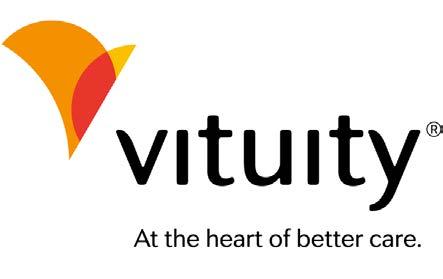



WE APPRECIATE THE SUPPORT OF OUR ACHENTX GOLD


